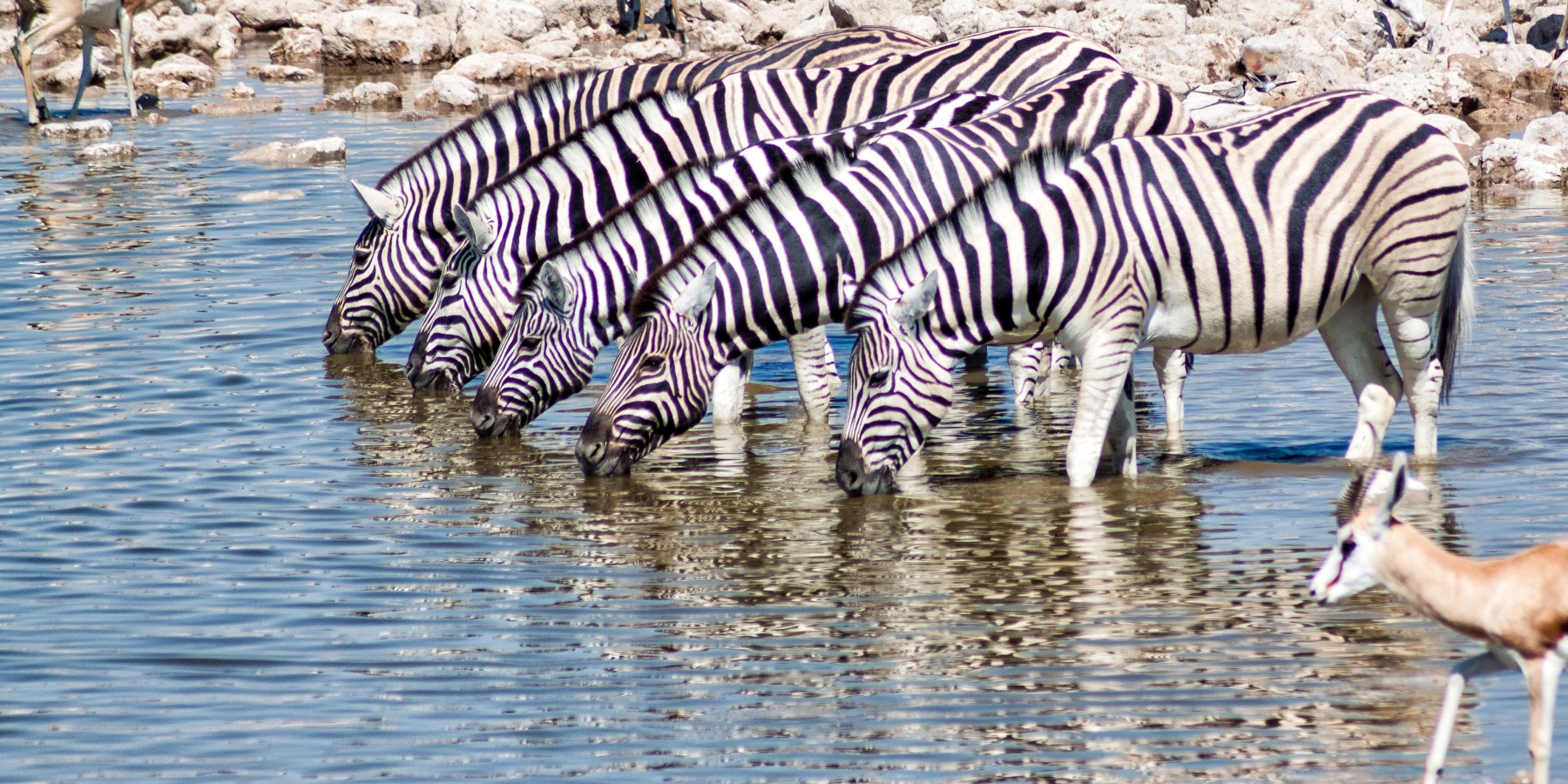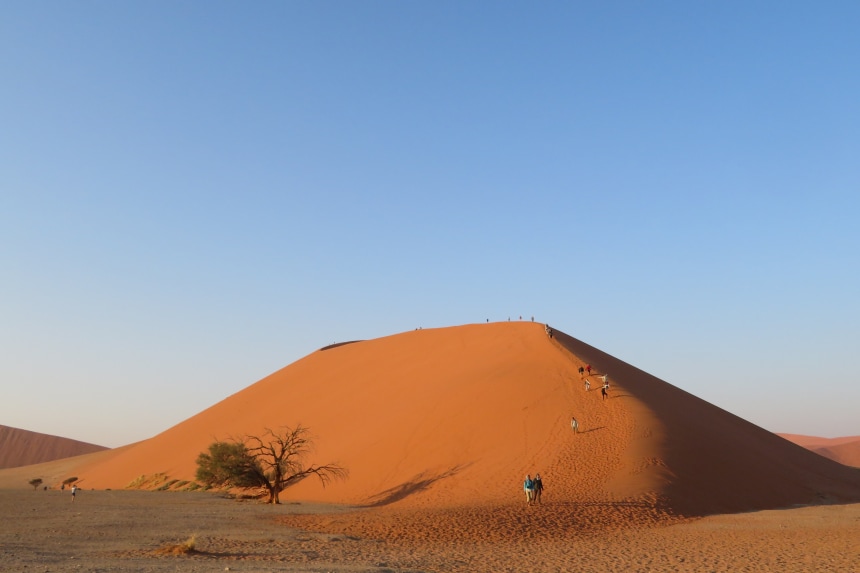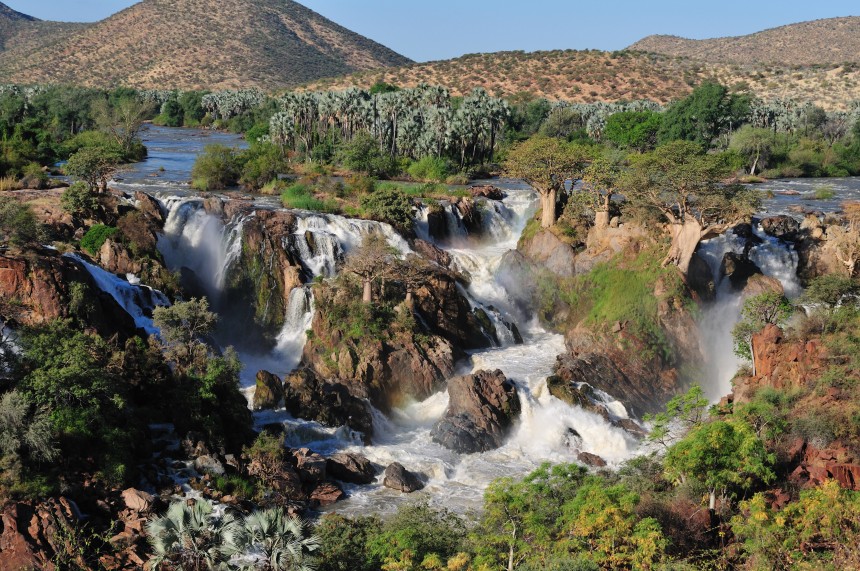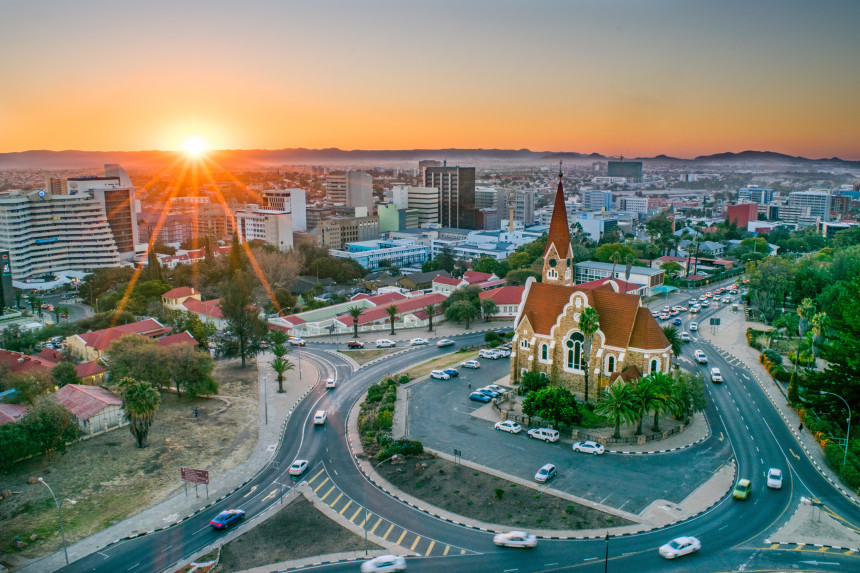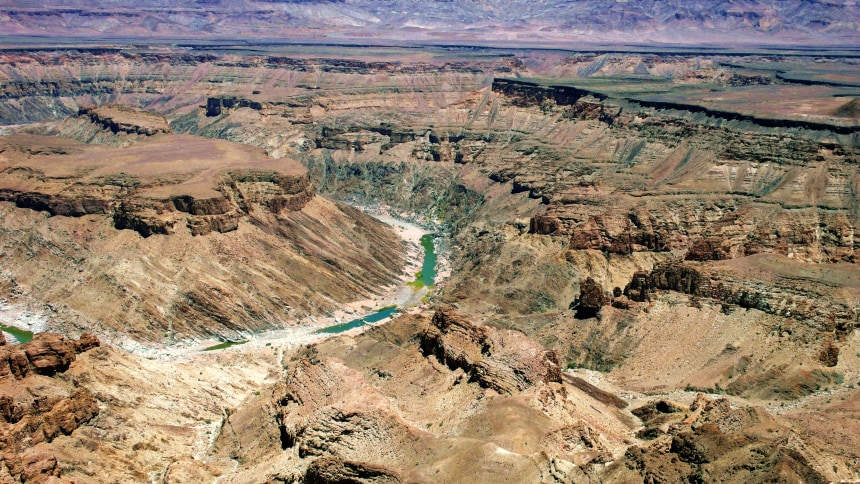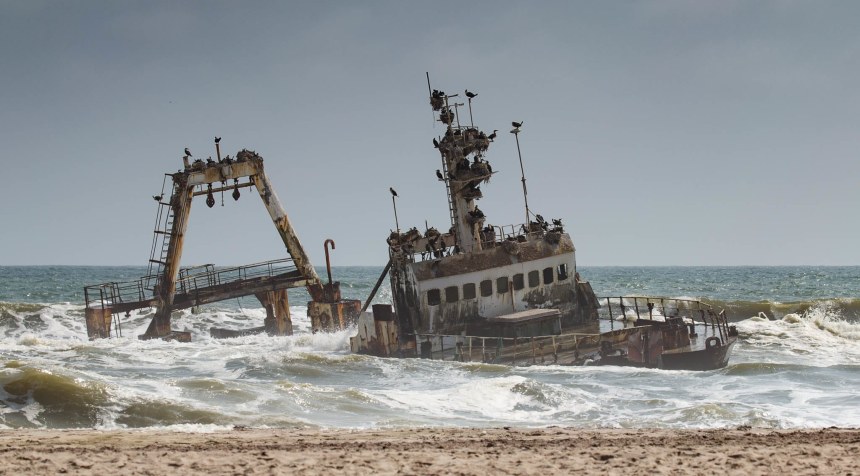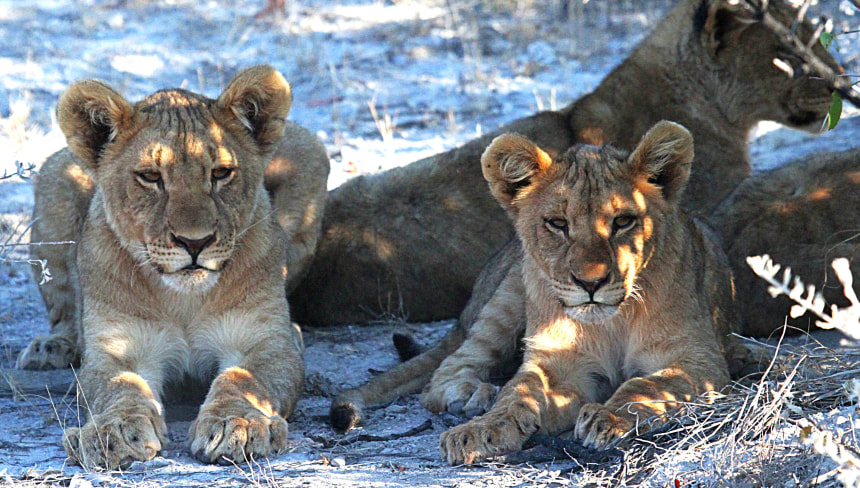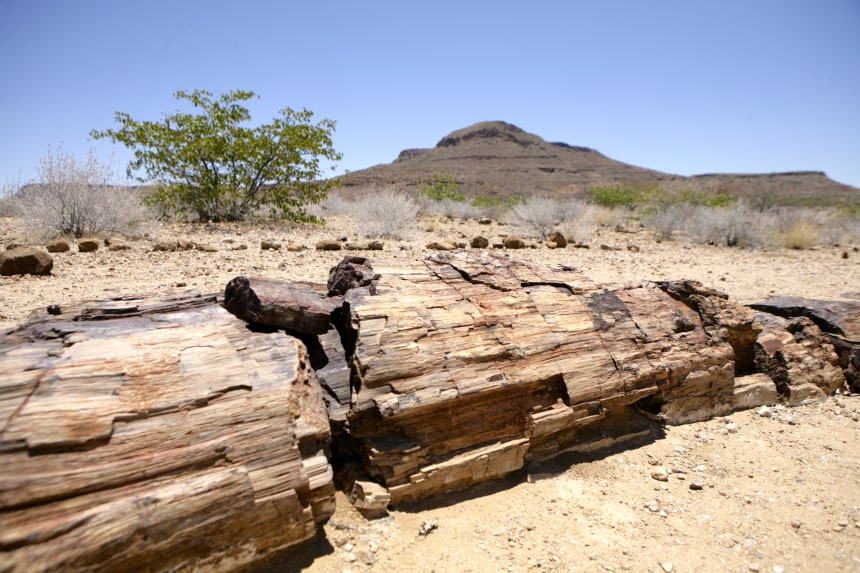| 6 mins read
Robert Aps.
Wildlife-filled national parks, mesmerizing natural sights, and the infamous Skeleton Coast are some of Namibia's top highlights. Although full of wild adventures and first encounters, Namibia is still accessible enough to be on your active holiday bucket list. Add these 8 natural wonders to the top of your itinerary:
Sossusvlei
Rusty red dunes meet crystal clear blue skies in iconic Sossusvlei desert expanse. The mighty dunes surrounding the salt and clay pan are some of the oldest and highest in the whole world. The tallest one, ‘Big Daddy’ towers over the landscape at 325 metres. However, the most popular dune is the 80m tall ‘Dune 45’ composed of 5-million-year-old sands; offers excellent opportunities for photography and is easier to climb. Dune 45 is surrounded by ‘Dead Vlei’, a landscape filled with remains of dead camelthorn trees. A tarmac road leads from Namib-Naukluft National Park’s Sesriem gate, for 60 km into the pan – it is recommended to hire a local guide while exploring the dunes and marsh.
Epupa Falls
A series of misty waterfalls spread over 1.5 km, the Epupa Falls in Kaokoland - on the border between Namibia and Angola - drop from a height of 60 m. It gets its name from Herero language; ‘Epupa’ stands for the fine mist created by falling water. The nearest remarkable point on the map is Opuwo, from where you can start your journey. Unless you are visiting during the wet period, no 4x4 vehicle is necessary. The journey from Opowo to Epupa is part of the exhilarating experience as you'll see quite a few undeveloped landscapes filled with quirky baobabs and swaying makalani palm trees. You could also observe the local Himba tribe. Hiking in the Epupa Falls and its surroundings is a great idea to see their indigenous culture from a distance.
Windhoek
Namibia's capital is a wonderful mix of European and African influences, but it's main sights are inextricably linked to nature. The National Botanical Gardens showcase a quiver forest, bottle trees, and the city's symbol, Windhoek Aloe. Tintenpalast Gardens are great for an afternoon stroll; also regarded as one of the best picnic spots in the city. If you want to get out of the city for a while without going too far away, then Avis Dam is the nature reserve you should visit. It's only a few kilometres outside Windhoek, but you'll get to hike a nature trail or do some bird watching too.
Fish River Canyon
Second only to the Grand Canyon in the USA, the Fish River Canyon is a massive stretch of natural formations - 160 km long and 27km wide, with its deepest point plunging to a ½ km. Not only can you get on the hiking trail here, there’s plenty of wildlife to spot too – including mountain zebras, hyenas, dragonflies, and Egyptian geese. Depending on the season, you might also see beautiful butterflies such as Kalahari orange and Queen's purple tips. Keep an eye out for reptiles when hiking in the canyon - the abundance of wildlife doesn't exclude venomous snakes.
Skeleton Coast
The name might suggest a pirate-themed ride in a water park, but in Namibia, it's the upper portion of the country’s coastline. You need a permit to enter Skeleton Coast's lower part, but the northern extreme is even more closely guarded. Each year, only about thousand people are given the permission, and that too by joining a designated tour. The tough restrictions are imposed to preserve this delicate area full of shipwrecks and animal bones scattered all over. The waters aren’t quite friendly either and there's no settlement near-by; hence, throughout the years, hundreds upon hundreds of ships have perished on this coast.
Etosha National Park
Elephants, zebras, and giraffes followed by lions and leopards - Etosha National Park is a great spot in Namibia for getting up close and personal with Africa's wildlife. Even the rainy season has its own perks and the park is a malaria-free area. The salt pans fill up with beautiful flamingos swimming in the ephemeral waters. One of the pans, the largest in Africa, is so big that it is claimed to be seen from space! There are plenty of lodges and campsites available for a variety of budgets. If you are inclined towards a luxurious safari holiday, you can find the top of the class bush accommodation. A locally guided tour is highly recommended to make sure that you get the best views of the park and its residents.
Cape Cross
Say hello to fur seals! You won't have time to greet each of them personally as Cape Cross has one of the world's largest brown fur seal colonies. Visit during November or December when it’s breeding time. At its peak, the fur seal count might even hit the 150,000 mark. Position yourself in Swakopmund, as the fur seal colony is approximately a 120-km drive away from north of the city. In order to not disturb the gathered seals, a walkway separated from the animals by a low wall has been erected. You can see the seals going about their daily lives without being intrusive.
Petrified Forest
Located in the northern part of Namibia, the Petrified Forest of Namibia is a national monument, which was first discovered in the 1940s by two farmers who stumbled upon this interesting site. While the name refers to a forest, you won't be seeing any standing trees here. The area is a steady accumulation of gigantic tree trunks that have fossilized throughout the ages. Some of these trunks might be 280 million years old. The natural force of erosion is to blame on for their exposure and a steady influx of tourists keeps the hype up. Explore this site if you are adventuring around Damaraland.
Robert is a writer, entrepreneur, and photographer discovering the world while sharing the finds with his readers. He loves hiking and active holidays. Never says no to trying a new gelato flavour!
Image details and license: https://flic.kr/p/7w6vhQ (VoY_TeC, CC BY-NC 2.0), https://flic.kr/p/MKpNp3 (Judith, CC BY-NC 2.0), https://flic.kr/p/e6cB4U (Joseph King, CC BY-NC-ND 2.0), https://flic.kr/p/fPqHqp (guido.menato, CC BY-NC 2.0)

